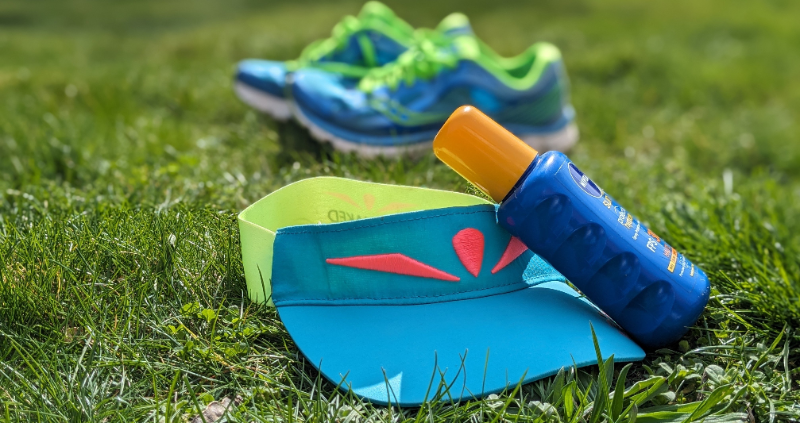Waterproof Ratings & Breathability Guide

Waterproof ratings and breathabilty guide to help your choose your next running jacket or clothing.
Most runners will encounter bad weather at some point whether in training or racing, so no doubt you'll want to buy a running jacket to protect you from the elements. However not all running jackets are equal and just because it says "waterproof", it doesn't mean you are going to stay dry for the whole of your run.
Water Resistant vs Waterproof
Waterproof is not the same as water resistant.
Water resistant means that the item of clothing will usually have an outer durable water repellent (DWR) coating. This coating will protect you from light rain for a short period of time and after that, the water will start to seep through.
Waterproof means that the material not only has a DWR coating but perhaps it also has heat sealed seams, water resistant zips, an extra membrane (gore tex is a membrane). It is then classified as waterproof if it meets a certain standard using the Hydrostatic Head test (HH).
Hydrostatic Head Test - Waterproof Ratings
The Hydrostatic Head test (HH) is a way of measuring the water tolerance of a fabric when it is put under pressure.
The test involves clamping a sample of the fabric onto a plate. Water under pressure, is then directed to the fabric via a tube. As more water is added to the tube, the pressure on the fabric increases. The point at which the water starts to seep through the fabric will provide a waterproof rating for that fabric.
So for example if the water started to seep through when the tube was filled to 50cm, then the fabric is given a waterproof rating of 5k or 5000mm.
For a fabric to be considered waterproof, it must have a minimum rating of 1500mm which is not very much. See the chart below to see how the HH waterproof ratings numbers compare.
|
Hydrostatic Head Rating |
Level of Water Resistance |
Conditions |
|
1500 - 5000mm |
Resistance to moisture and dampness under no pressure. |
Very light rain or snow. |
|
6000 - 10000mm |
Rainproof under light pressure. |
Light rain and snow. |
|
11000 - 15000mm |
Waterproof and rainproof under medium pressure. |
Moderate rain and snow. |
|
16000 - 20000mm |
Waterproof and rainproof under heavy pressure. |
Heavy rain and snow |
|
> 20000mm |
Waterproof and rainproof under very heavy pressure. |
Very heavy rain and snow |
Breathability of Fabrics
Breathabilty refers to how much water or moisture is able to pass through the fabric from the inside to the outside.
You may have experienced wearing a jacket, that although it kept you dry on the outside, the inner layer felt damp from your body sweat. It probably had a low breathabilty rating.
There are various tests to measure breathabilty and the end result is usually expressed as a number like 20,000 grams. That means that amount of grams of water vapor can pass through a m² of fabric over a 24 hour period. The higher the number, the more breathable the fabric.
|
Breathability Rating |
Conditions |
|
5,000 – 10,000g/m² |
Lowish level of breathability. Fine for walking of lower level activity and non humid conditions. |
|
10,000 – 15,000g/m² |
Medium level of breathabilty. You may get clammy if you were working hard or in humid conditions. |
|
15,000 – 20,000g/m² |
Good for people who perspire a lot or for hard workouts and hill hiking and humid conditions. |
Choosing
With a running jacket, you are aiming to choose one that provides the best balance between waterproofness and the breathabiltiy that you need.
When you are making your choice, you will see numbers such as 10k/10k or 10k/10000g. The first number refers to the waterproof ratings level of the material and the second number to the breathability of the material.
It is worth remembering that some races especially ultra marathons, will require you to have a jacket with a minimum HH rating. This is usually 10k or 10000mm. Also bear in mind that often the higher rated jackets tend to be a bit heavier in weight and may be less easy to pack away in a small backpack.
From my experience, the numbers for breathability and waterproofness can be a bit subjective as some manufacturers will do their own testing so results can vary. As an example I have 2 running jackets and they both have a waterproof and breathablilty rating of 10k/10000 g. However in one of them I sweat way more than the other but yet it protects me more from the elements. The other jacket is the reverse.
I like both of the running jackets and wear them according to the weather and what sort of run I am doing.
Salomon Lightning Running Jacket Review
Uglow U-Rain Hybrid Running Jacket Review
